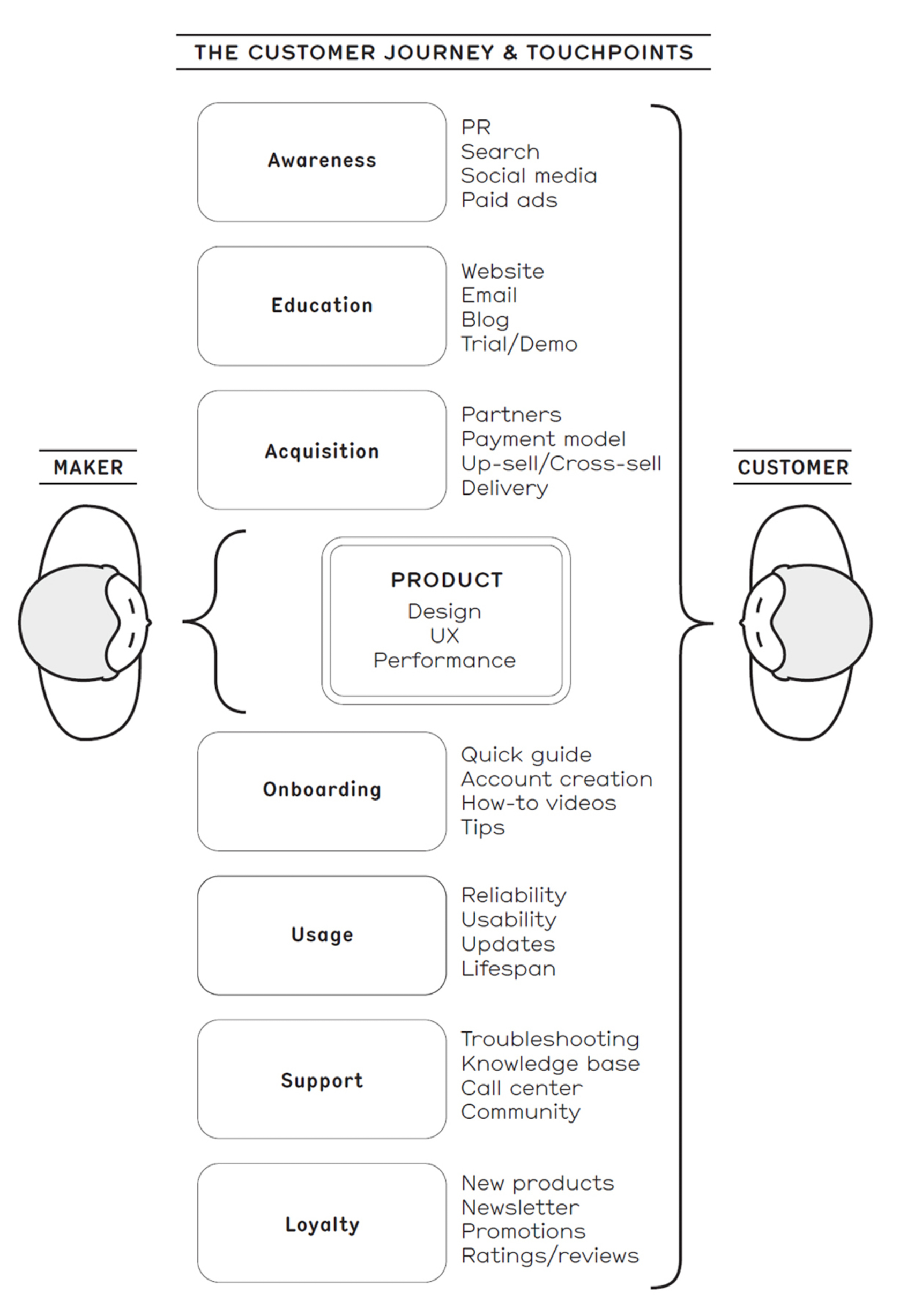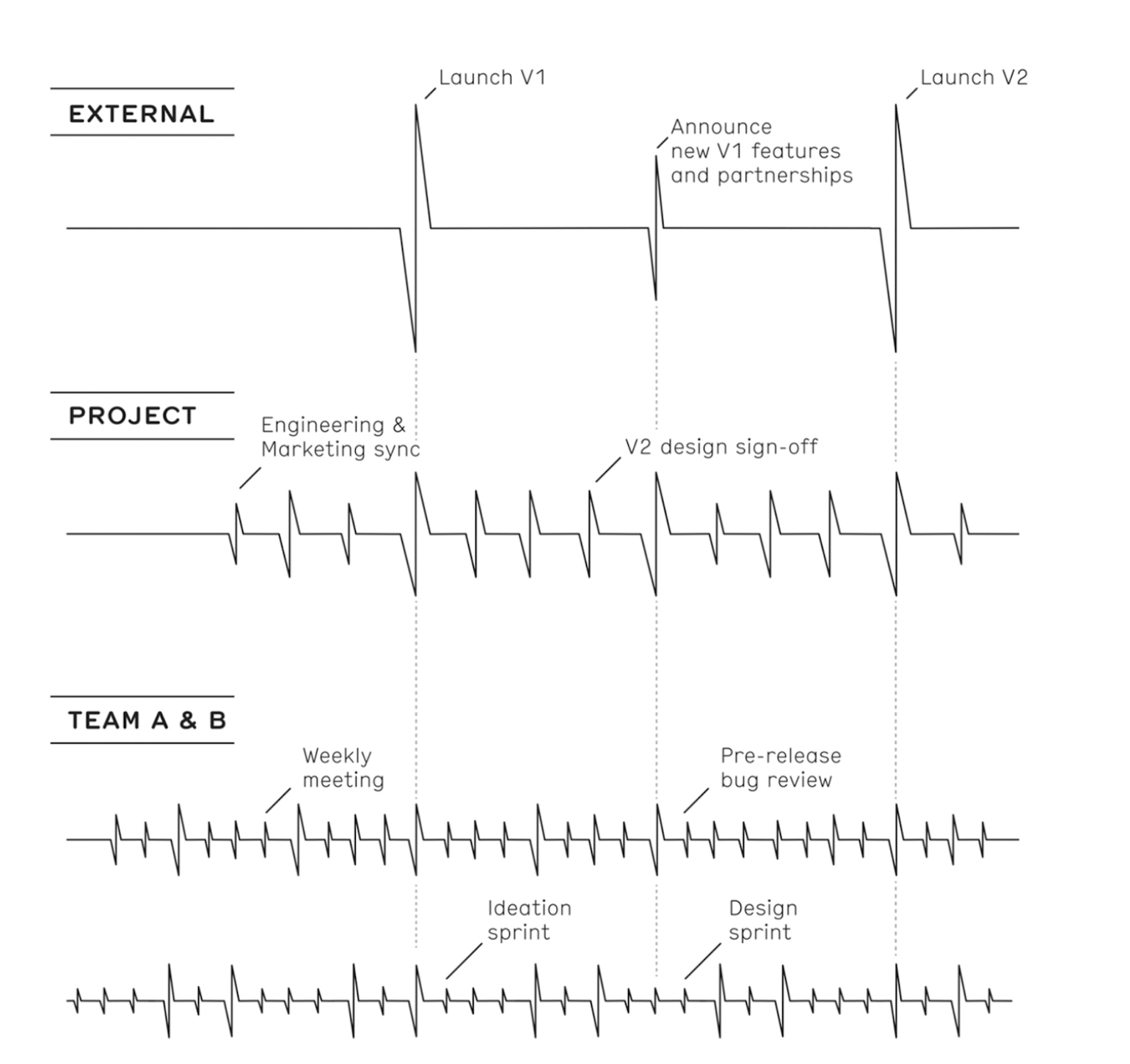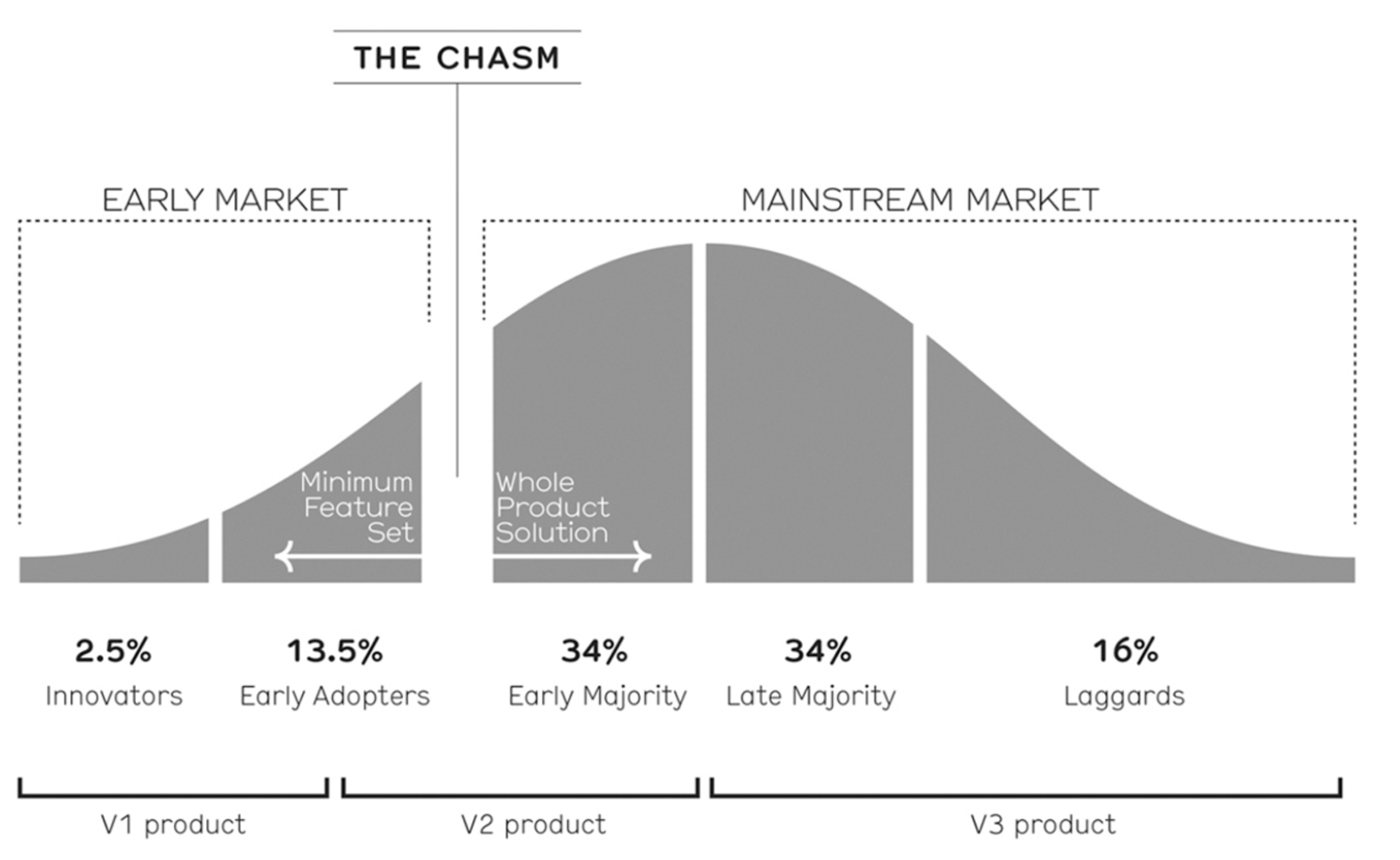Introduction
Tony Fadell is CEO of nest (bought by google ), and instrumental in building products at Apple like the iPod and the iPhone.
The book is not about facts and science, but based on tony’s experience and deals with subjective concepts like how to build products, dealing with assholes, and how to hire etc.
Overall, 4/5 stars for me, and I recommend reading it. It covers one strong individuals strong opinions, about how to deal with matters one must deal with when building impactful products. He certainly has some of the biggest products in the world under his belt, So i’m definitely taking notes on what this guy has to teach me.
I’ve read enough books on entrepreneurship, business and startups - but I think this one has more specific advice than the typical 0-1 book. I’m going to mention the ones that I thought were noteworthy for me / unique views. Do read the full book if you think these resonate.
Fair warning: The summary is a bit larger than usual. That’s because the topics in each chapter are completely different, so the book packs a lot of interesting quotes and wisdom that I end up taking a note of. Feel free to skip to the topics that most interest you.
Summary in 210 kilobytes
What to work on
If you’re passionate about something—something that could be solving a huge problem one day—then stick with it.
One day, if you are truly solving a real problem, when the world is ready to want it, you’ll already be there.
How to work with your heroes
If you have a hero you want to work with, follow them, bring something interesting to them, ask interesting questions. Don’t ask for a job / meeting, but persistence and being genuinely interested and helpful will work.
And if that seems impossible—if you follow your heroes on Twitter but can’t imagine they’ll ever pay any attention to you—I’m excited to tell you that that is complete bullshit. I doubt I’m anyone’s hero, but I’m an experienced, well-connected product designer who’s been lucky enough to make some famous technology. Most people assume I won’t pay any attention to people who randomly DM me on Twitter or send me unsolicited emails out of the blue. But sometimes I do. Not when people are just asking for a job. Or angling for funding. But I’ll notice people who come with something interesting to share. Something smart. Especially if they keep coming. If they sent me something cool last week and something cool this week and they keep bringing fascinating news or tech or ideas and they’re persistent, then I’ll start to recognize them. I’ll start to remember them, and respond. And that can turn into an introduction or a friendship or a referral or, potentially, a job at one of our portfolio companies. The key is persistence and being helpful. Not just asking for something, but offering something.
How IC’s should grow
20 percent of the time, individual contributors need to look up. And they need to look around. The sooner they start, the faster and higher they’ll advance in their career. Looking up - means looking forward in the future of your work, to make sure you’re going in the right direction
Looking around - means making sure that other functions that you need help from, are also on track and you’re not losing rhythm with them
“Your job isn’t just doing your job. It’s also to think like your manager or CEO. You need to understand the ultimate goal, even if it’s so far away that you’re not really sure what it’ll look like when you get there”
Being a great manager
Remember that once you become a manager, you’ll stop doing the thing that made you successful in the first place. You’ll no longer be doing the things you do really well—instead you’ll be digging into how others do them, helping them improve. Your job will now be communication, communication, communication, recruiting, hiring and firing, setting budgets, reviews, one-on-one meetings (1:1s), meetings with your team and other teams and leadership, representing your team in those meetings, setting goals and keeping people on track, conflict resolution, helping to find creative solutions to intractable problems, blocking and tackling political BS, mentoring your team, and asking “how can I help you?” all the time.
Becoming a manager is a discipline. Management is a learned skill, not a talent. You’re not born with it.
Being exacting and expecting great work is not micromanagement. Your job is to make sure the team produces high-quality work.
Don’t worry that your team will outshine you. In fact, it’s your goal. You should always be training someone on your team to do your job. The better they are, the easier it is for you to move up and even start managing managers.
One of the hardest parts of management is letting go. Not doing the work yourself. You have to temper your fear that becoming more hands-off will cause the product to suffer or the project to fail. You have to trust your team—give them breathing room to be creative and opportunities to shine.
1:1s with individuals should have an agenda, a clear purpose, and should be beneficial to both sides. You should get the info you need about product development and your team members should get insight into how they’re doing. Try to see the situation from their point of view—talk about their fears and your own concerns out loud, reframe your thoughts so they can hear the feedback, understand the goals, clear up ambiguities or concerns.
Dealing with Assholes
Types of assholes
Political assholes: The people who master the art of corporate politics, but then do nothing but take credit for everyone else’s work. These assholes are typically incredibly risk averse—they’re focused exclusively on surviving and pushing others down so they can reach the top.
Controlling assholes: Micromanagers who systematically strangle the creativity and joy out of their team. These assholes can never be reasoned with. They resent any good idea that didn’t come from them and are extremely threatened by anyone on their team who is more talented than they are.
Asshole assholes: They suck at work and everything else. These are the mean, jealous, insecure jerks who you’d avoid at a party, but who inevitably sit immediately next to you at the office. They cannot deliver, are deeply unproductive
Mission-driven “assholes”: The people who are crazy passionate—and a little crazy. They speak most frankly, trampling the politics of the modern office, and steamroll right over the delicate social order of “how things are done around here.” Much like true assholes, they are neither easygoing nor easy to work with. Unlike true assholes, they care. They give a damn. They listen. They work incredibly hard and push their team to be better—often against their will.
How to deal with them
Kill ’em with kindness.
Ignore them.
Try to get around them.
Quit.
In that order
Most people aren’t assholes. And even if they are, they’re also human. So don’t walk into a job trying to get anyone fired. Start with kindness. Try to make peace. Assume the best. and if that doesn’t work, then remember that what goes around comes around. Although it never comes fast enough
When to quit
You’re no longer passionate about the mission. If you’re staying for the paycheck or to get the title you want, but every hour at your desk feels like an eternity, then save yourself.
You’ve tried everything. You’re still passionate about the mission but the company is letting you down. So you’ve talked to your manager, to other teams, to HR, and to senior leadership. You’ve tried to understand the roadblocks and pitched solutions and options. But still, your project is going nowhere or your manager is impossible or the company is falling apart. In that case, you should leave that job but stick to the mission and find another team on a similar journey.
Building great experiences
When building 0->1 products, most think about prototypes.
But don’t just make a prototype of your product and think you’re done. Prototype as much of the full customer experience as possible. Make the intangible tangible so you can’t overlook the less showy but incredibly important parts of the journey. You should be able to map out and visualize exactly how a customer discovers, considers, installs, uses, fixes, and even returns your product. It all matters.
Your product isn’t only your product. It’s the whole user experience—a chain that begins when someone learns about your brand for the first time and ends when your product disappears from their life, returned or thrown away, sold to a friend or deleted in a burst of electrons.
Builders sometimes think only about the product, but prototyping and imagining the entire customer experience is what many miss

Storytelling
Appeal to the pain that users have to go through. Appeal to the emotional feelings aroused when you talk about the struggles they have to face to solve this particular problem.
By the time you describe the solution, the audience should already be engaged and physically annoyed with the problem.
The story of your product, your company, and your vision should drive everything you do
When you describe the solution, you need to boil down the complicated concept into simple words.
Analogies can be such a useful tool in storytelling. They create a shorthand for complicated concepts—a bridge directly to a common experience.
A great analogy allows a customer to instantly grasp a difficult feature and then describe that feature to others. That’s why “1,000 songs in your pocket” was so powerful.
Evolution vs Disruption
Your version one (V1) product should be disruptive, not evolutionary.
Assuming V1 was at least a critical success, the second version of your product is typically an evolution of your first. Refine what you made in V1 using data and insights from actual customers and double down on your original disruption. The execution should step up a notch—
Don’t overshoot. Don’t try to disrupt too many things at once. Focus on solving one thing first, and when you’ve solved that go for another
You focus on making one amazing thing but forget that it has to be part of a single, fluid experience.
Heartbeats

Don’t have too many external launches, even if you can. You need to let your customers gain balance, before you throw another ball at them to catch
Having a well known heartbeat, both external, project and team-wise is important - because deadlines are important.
People will do their most creative and constructive work, when they have a sense of timelines and urgency.
The chasm - Custom adoption curve

Geoffrey Moore first mapped out when different people are open to new products in his book Crossing the Chasm.
To/read Crossing the chasm
(Not) Killing yourself
Steve jobs was obsessed with Apple. But not everyone should be Steve. Having a balance, and knowing what balance is right for you is good.
To manage his work and keep things in order, interestingly - he used the same GTD concept to manage work. I wrote a blog article on this recently, so do check that out if interested.
Additionally he made his list-of-things and projects completely public to his teams. That way everyone knew what he was focussing on. Eventually people followed and started doing the same.
Assistants are good way for senior executives to delegate machinery work like booking meetings/emails so that the executive can stay productive . Assistants can be shared executives so save cost
How to handle a crisis
Everyone goes through a moment of crisis and breakfppints
Keep your focus on fixing the problem and not who to blame, that can be solved later
Get in the weeds. Don’t worry about micromanagement . Release the pressure and let people do work once things are in control
Get advice from mentors and investors
Constant communication - externally and internally
Accept responsibility as a leader and listen to feedback.
Hiring
The best teams are multi generational. Experienced people have wisdom, but it takes energy to build, so you need younger people too.
The 3 crown strategy - Your hiring committee should have 1) The hiring manager, 2) manager of eventual custom of candidate. Example: for UX designer customer would be engineers.
What makes a good recruiter: People who are actually excited about the product, and can create and tell a good story
Important questions to ask: Why you left the previous company, and why you’d like to join this one ? It needs to be a compelling and flowing story.
Advise on onboarding new people - They need a lot of help from the manager. Show them how to work in the environment and what the culture is - so they don’t feel lonely and feel scared.
You’ll also need to fire people. Don’t be scared of it, but don’t be callous, either. Give people plenty of warning and opportunity to course correct, follow the letter of the law, then bite the bullet and help them find a better opportunity.
Breakpoints
Breakpoints are intentional and planned points in a companies journey, where the company must pause and change things about the way they work.
Typically these arise as more and more people are joining and the company is growing. The old ways of working don’t work anymore and change is needed.
A communication strategy becomes very important as the team and company scales. You need effective ways to articulate leadership vision throughout.
As your company increased, some individuals and teams will have to focus instead of go at breadth. This will be hard to do but is important to keep functions working great .
Meetings
They become too much and overwhelming . But important .
Managers have to keep track of how many and how much time is spent and optimise it
Culture
Is the hardest thing to pinpoint and the hardest to preserve. Even
So to preserve what you love, have your team write down the things they value most and build a plan to continue them.
Culture arises organically but then needs to be codified to be maintained.
Always remember that change is growth and growth is opportunity. Your company is an organism; its cells need to divide to multiply, they need to differentiate to become something new. Don’t worry about what you’re going to lose—think about what you’re going to become.
Design Thinking
Design is not just a profession. A customer is not only a person who buys something. A product is not just a physical object or software that you sell. You can employ design thinking for everything you do.
Design thinking forces you to really understand the problem you’re trying to solve. In this case, the problem isn’t “I need a car to get to work.” It’s actually much broader: “How do I want to get around?” The product you’re designing is a mobility strategy for your life.
Literally the only way to make a really good product is to dig in, analyze your customer’s needs, and explore all the possible options (including the unexpected ones: maybe I can work from home, maybe I can move closer to work). There are no perfect designs. There are always constraints. But you choose the best of all the options—aesthetically, functionally, and at the necessary price point. That’s a design process.
Avoid Habituation:
Most people are so habituated to the problems in their home lives or work that they no longer realize they’re problems. You can’t solve interesting problems if you don’t notice they’re there.
Product Marketing Method
Marketing cannot just be figured out at the very end. Use marketing to prototype your product narrative from the beginning.
The creative team can help you make the product narrative tangible. This should happen in parallel with product development—one should feed the other.
The best marketing is just telling the truth. The ultimate job of marketing is to find the very best way to tell the true story of your product.
Messaging Architecture:
To make the story feel real, to make it tangible, you need to visualize it.
It’s essential for product development: Product management and marketing work on the messaging architecture from day one.
It’s a living and shared document.
The process of convincing someone to buy and use your product needs to respect the customer, needs to understand their needs at different points of the user experience. You
Example from Nest:
Top-line billboards would just introduce the idea of a new kind of thermostat. The packaging would highlight the top six features and how the product connects to your phone. The website would emphasize energy savings and showcase how Nest fits into your daily life. The usage guide inside the packaging would provide more detail about how to train the learning algorithm and tips for saving energy. The support site would go deeper with exact instructions and thorough explanations of all the features.
The point of PM’s
In many organisations PM’s starting becoming project managers, and in some they start focusing on the marketing/sales aspect more. These are typically anti-patterns
The point of PM’s is to be an architect of the product. They are someone that sees across the Sales, marketing, product development and support aspects and is able to guide the team on what needs to be done next.
The product manager has to be a master negotiator and communicator. They have to influence people without managing them. They have to ask questions and listen and use their superpower—empathy for the customer, empathy for the team—to build bridges and mend road maps. They have to escalate if someone needs to play bad cop, but know they can’t play that card too often. They have to know what to fight for and which battles should be saved for another day. They have to pop up in meetings all over the company where teams are representing their own interests—their schedules, their needs, their issues—and stand alone, advocating for the customer. Amazing product managers usually emerge from other roles. They start in marketing or engineering or support, but because they care so deeply about the customer, they start fixing the product and working to redefine it, rather than just executing someone else’s spec or messaging. And their focus on the customer doesn’t cloud their understanding that ultimately this is a business—so they also dive into sales and ops, try to understand unit economics and pricing.
Sales Culture
Don’t do the typical model of giving sales people commission once the sale is closed. That creates short-term incentives for the sales team. Treat them with long term stock options and good salary
Being A CEO
It’s a poison to think that all good ideas only come from you. You need to seek ways to bring the best ideas to life.
It’s also a trap to get into the “only things invented here” syndrome.
Steve jobs rejected android before google bought it. Had Steve jobs bought android, our lives might be very different.
If you aren’t failing = you aren’t making progress. So embrace it
Conclusion
Only two things matter in the end - “What you build”, and “Who you build it with”
You might get lucky, and the thing you’re building succeeds. But luck does play a big role, so some failure is inevitable
When you’re building, don’t just aim to make your users life better - aim to give them superpowers.
Mentoring, is probably the most enriching and meaningful thing you will do. In fact, you will end up learning much more from your mentees, than you will teach them.
